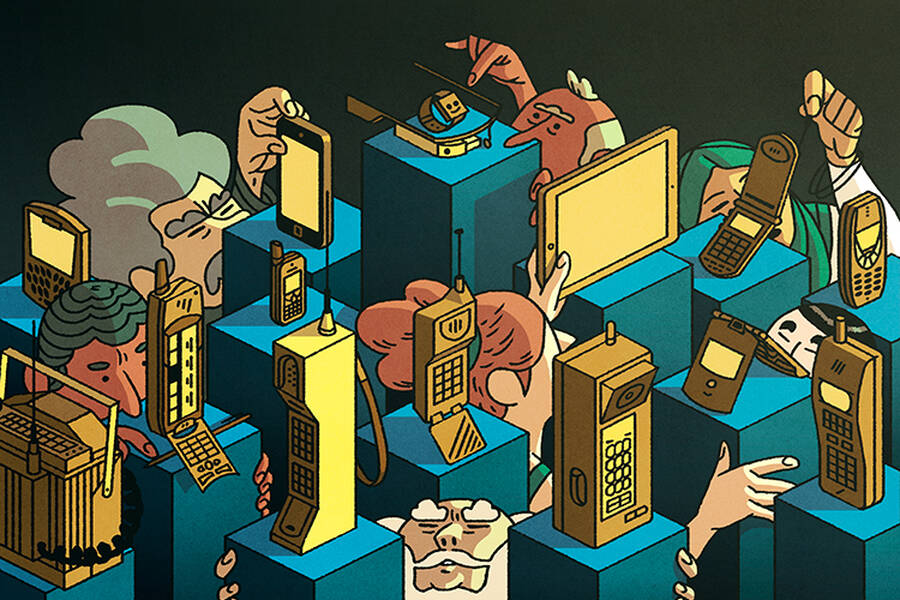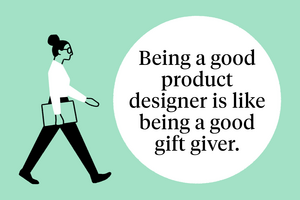To help, we’ve compiled research from Kellogg faculty on the science of making smart decisions about food.
It turns out we’re not always rational in our approach to food.
According to research by marketing professor Alexander Chernev, many believe that adding a healthy side dish to an otherwise unhealthy meal makes it less fattening. And the more committed a person is to their diet, the more likely they are to fall for this “side-salad illusion.”
“People often behave in a way that is illogical and ultimately counterproductive to their goals,” Chernev says.
In his study, more than 1,000 respondents were asked to estimate the calorie count of a variety of meals. About half the respondents were shown a series of unhealthy meals—a hamburger or cheesesteak, for example—while the rest were shown the same unhealthy meals accompanied by a healthy item, such as celery sticks or an apple. Those who saw the meals that included a healthy side dish guessed the overall calorie count to be much lower, as if they believed the veggies or fruit had somehow subtracted calories from the unhealthy meals.
But that’s not really what’s going on in dieters’ minds, Chernev says. Instead, he argues, this failure of logic arises from a fundamental flaw in the way we think about food.
“People think of food in terms of vice and virtue,” Chernev explains. “So when we add something healthy to an unhealthy food, we think it makes the entire meal healthier. And because we often confuse a meal’s healthiness with its calorie content, we think that healthier meals are also more diet-friendly.”
In other words, he adds, “virtue makes the vice seem less ‘vicey.’”
Even when we try to stick to a healthy regime, the occasional splurge can be inevitable. And according to research by Rima Touré-Tillery, an associate professor of marketing, it is more likely to occur when we are in the middle of something.
When Touré-Tillery and her collaborator placed Kit Kat bars and raisins on a table in a business school hallway, students were more likely to choose the Kit Kat bar if the sign said “Keep your day going!” instead of “Start your afternoon!” or “End your morning!”
“Actions at the beginning and end of a sequence appear to reflect more on our own personal standards than actions in the middle,” she says. In other words, when we stray from our goals in the middle of a given sequence, we damage our self-image less than when we stray at the beginning or end. And that happens whether the sequence is real or imagined. After all, the middle of the day is no different than the start of the afternoon.
The phenomenon transcends snacking habits. The researchers also found that people are more willing to spend money in the middle of a sequence.
Touré-Tillery thinks this research could have important policy implications, for example, combating personal debt or the global obesity epidemic.
“Appealing to a person’s desire to think of herself in positive terms proves to be a powerful motivator in the arduous pursuit of long-term goals,” she says.
What about getting your kids to eat healthier?
Some parents promise their children rewards for eating healthy foods. But what if they tried limiting their kids’ access to broccoli and spinach?
That’s the advice (with qualifications) of Michal Maimaran, a research associate professor of marketing, and Yuval Salant, an associate professor of managerial economics and decision sciences.
The couple’s research finds that if parents want fresh vegetables to be in high demand, they should create the illusion of scarcity. In one study, two groups of children were offered carrots and crackers, but only the second group was told, “We are almost out of carrots.” This second group actually ate more carrots than crackers, while the group that was not told that the carrots were in limited supply ate half as many carrots as crackers.
A related trick: stop telling kids that vegetables are good for them.
In previous research, Maimaran found that three to five-year-olds will eat less of a food if they are told that it will make them healthier or stronger. A more effective approach would be to emphasize how good it tastes. But the best strategy is to play it cool.
“Saying the food is yummy does not hurt, but it doesn’t help either,” she says. “My research shows that it is best to say nothing about the food—simply serve it without saying what goal the food might serve.”
Does eating in restaurants cause obesity? Many policymakers assume so. Los Angeles, for example, won’t permit new fast-food restaurants to open in South L.A., an area struggling with obesity, and many states and cities require chain restaurants to print nutrition information on menus. But according to finance professor David Matsa, restaurants might not be the problem.
Matsa and his coauthor analyzed real-world data—including surveys on calorie consumption and maps of accessibility to restaurants—to figure out whether people who live closer to restaurants weigh more than those who live farther away. And they found that proximity to restaurants did not lead to increased body mass. Yes, people who live near restaurants tend to eat out more, and people eat more when they eat in restaurants, but Matsa found that diners compensate by limiting what they eat at home throughout the rest of the day. When it comes to obesity, restaurants might play a role, but not the one we think.
“Our work should not be used to trivialize problems related to obesity,” Matsa remarks, “but to promote policies that are more likely to succeed in reducing them.”
Those of us cutting carbs may be biased against the potato, but everyone has to respect its historic role as global peacemaker.
According to Nancy Qian, a professor of managerial economics and decision sciences, the agricultural boom that potato farming set in motion ultimately reduced armed conflict in the 18th and 19th centuries.
Potatoes were first brought to Europe from South America by 16th century Spanish explorers. Given how efficient the new crop was—it required comparatively little land to sustain the average family—and how many vitamins it contained, the potato was responsible for a sharp decline in warfare on the continent.
After all, if farms can produce more food per acre, then agricultural land becomes cheaper, and people aren’t as interested in fighting over it. It’s also possible that men were less likely to go to war when they had a harvest to tend to.
The research wasn’t easy to conduct. Over six years, Qian and her coauthor assembled a massive database of armed conflict in Europe, North Africa, and the Middle East. They found that regions with climates suitable for growing potatoes experienced fewer battles after 1700, as compared to regions with unsuitable climates.
Qian says historians and economists should pay more attention to the many ways that agriculture has shaped our world. “These historical jumps in agricultural productivity alter the landscape of human civilization in important and fundamental ways we haven’t really talked about,” she says.




